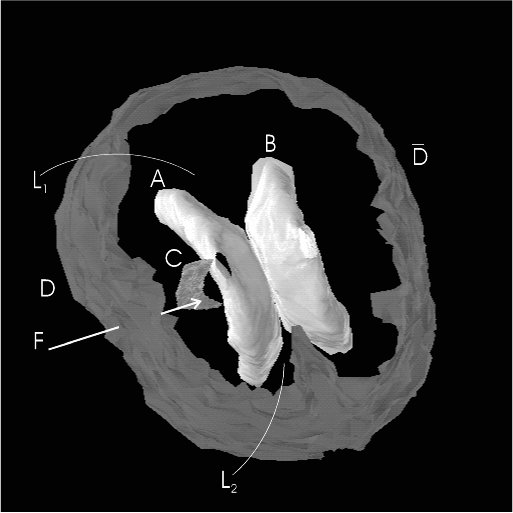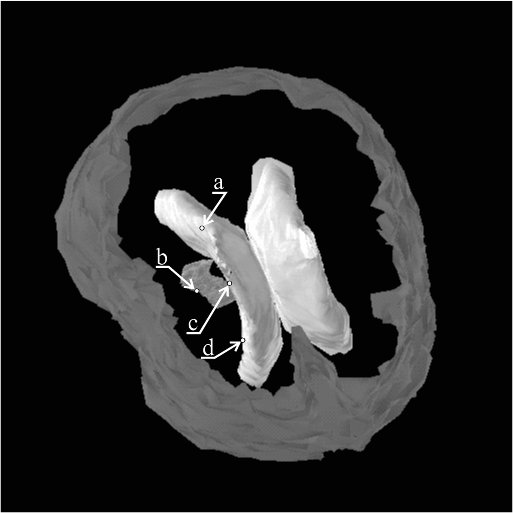by O. Salvetti
The research
The study and development of deformable models enabling simulation of the behaviour of three-dimensional (3-D) structures embedded into real scenes and subjected to deforming forces, represent a challenge to computational neurosciences.
In the construction of such models, artificial neural networks are in the forefront of research, results obtained so far by the "Signals and Images" Laboratory of ISTI-CNR have evidenced the potential and the effectiveness of this approach.
Simulation of physical properties of real objects and storage and classification of 3-D images rely on a "really" three-dimensional model: this is essential to avoid two-dimensional approximations when dealing with spatial deformations. The model incorporates the structures in the scene, and enables extraction of physical properties to be assigned to each element of the model. To this aim, advanced architectures of multi-levels artificial neural networks have been studied, that work on morpho-textural features and perform the 3-D images matching.
Applications
The studies have been applied to the interpretation of neuroradiological images of the brain,in order to create a realistic model of the intracranial space. This application relies on a physical model of the encephalic architecture subject to mechanic expansive or contractive solicitations, supporting segmentation, reconstruction and densitometric classification of 3-D tomographic images.
The geometric model, extended with the physical model of the intracranial space, is suitable to provide information about the elasticity, resistance and hardness of the cerebral structures and enables simulation of their behaviour.
Collaborations
The research has been carried out in collaboration with the Department of Neurosurgery of the University of Pisa, the Chair of Pattern Recognition of the University of Erlangen-Nürnberg and the Bavarian Research Center for Knowledge Based System in Erlangen.
Future developments
New algorithms are being developed to optimise the computational complexity of the methods. In fact, real-time processing is an important aspect in computational neuroscience and in medical-clinic applications. Theoretical aspects of algebraic classification and descriptive image analysis are also investigated in collaboration with the Scientific Council 'Cybernetics' of the Russian Academy of Science in Moscow.
Immagini:



